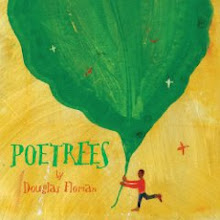3 hours ago
Thursday, December 18, 2008
Paul Klee: the Visible Man
Today is the birthday of Swiss painter Paul Klee. As a young artist Klee visited Tunisia. The experience was a turning point in his life and work as he became "one with color." He was perhaps the first major artist to connect directly with the purity, joy, and abandon of children's art in his small drawings, watercolors, and oil paintings. A teacher at the Bauhaus, Klee created a systematic and thorough Pedalogical Sketchbook, a vast study of all the pictorial elements of art. For Klee the inner world was as important as the outer visible world: "Art does not reproduce the visible; rather, it makes visible." In some 10,000 works he experimented with a wide variety of mediums, such as watercolor, oil paint, gouache, tempera, inks, muslin, gauze, and chalk, as a powerful means of expressing humor, fantasy, irony, poetry, and, at the end of his life, melancholy.
Subscribe to:
Post Comments (Atom)










7 comments:
I love how the blackened ground peeks through the color.
and the great movement in the work
Klee sounds like a deeply spiritual person. His art manifesting the inner life, his inner worlds. Those colors vibrate, so that means he must've too (his drive to create) because he felt at one with colors. How fantastic! Happy Birthday Paul Klee.
I find an Eastern influence as well
Well, I'm happy I clicked here from another blog (for Sun. Scribblings writings) because I see a post on Ginsberg, a poet I enjoy and Paul Klee, an artist whose work I grew into in my adult years and even purchased an art history book exclusively about him. There's something so moving about his colors and the musical quality of the rhythms I feel in his art, that pulled me into his work. (I've never seen them yet in real life, but am hoping his work will come to a museum near me.)
I love the translucency of this--gorgeous. And the quotation: "Art does not reproduce the visible; rather, it makes visible."
By the way Klee's name is pronounced "clay."
Post a Comment